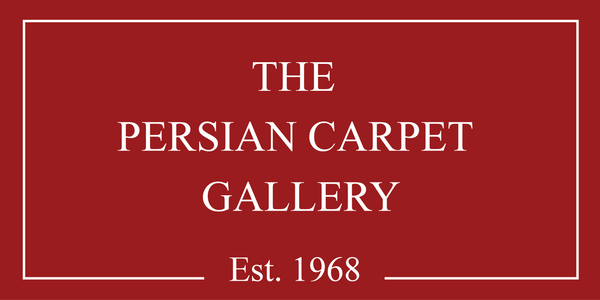Blogs
All-Over Animal and Floral Carpet: The carpet Museum of Iran
The All-Over Animal and Floral Carpet, a 17th-century masterpiece from Tabriz, exemplifies the rich artistry of Persian rug weaving. Now housed in the Carpet Museum of Iran, this rug features intricate designs depicting wildlife, trees, and symbolic motifs, blending Persian and Chinese influences. Its technical excellence includes a silk warp, cotton weft, and wool pile, with a high knot density of 489,600 knots per square meter. This exquisite piece reflects Persian storytelling and craftsmanship, making it a significant artifact for collectors and historians alike.
17th Century Persian Silk Carpet in the Staatliche Museen, Preussischer Kulturbesitz, Berlin
This 17th-century Persian silk carpet, originating from Isfahan or Kashan during the reign of Shah Abbas the Great, is a true masterpiece of Persian craftsmanship. Currently housed in Staatliche Museen, Berlin, it features an intricate arabesque design, silk pile enriched with silver and gold-gilt threads, and an extraordinary knot density of 740,000 knots per square meter.
Part of the famous 'Polonaise' carpets, these luxurious pieces were highly sought after by European royalty. This specific carpet was gifted by Prince Jean of Liechtenstein, further emphasizing its prestige. A nearly identical version is held in a private collection.
Persian silk carpets remain among the most valuable and collectible rugs, admired for their unparalleled craftsmanship, luxurious materials, and historical significance. Their timeless beauty and investment value make them a prized possession for collectors and enthusiasts worldwide.
Explore more about authentic Persian rugs and their legacy at Persian Carpet Gallery.
Silk Carpet with Arabesques in the Cleveland Museum of Art, Cleveland, Ohio
This exquisite 17th-century silk carpet from Isfahan or Kashan is a remarkable example of Persian craftsmanship, currently housed in the Cleveland Museum of Art. Measuring 206 x 127 cm, it features a silk pile with gold thread, a silk warp, and a cotton weft, showcasing the luxurious materials used in Safavid royal workshops.
Known as a Polonaise carpet, it represents a category of Persian rugs created as diplomatic gifts for foreign courts. Its symmetrical design features floral motifs and large arabesques, enclosed within a wide, intricately patterned border. Similar pieces can be found in the Carpet Museum of Iran, highlighting its historical and artistic significance.
This masterpiece reflects the elegance of Persian weaving traditions, celebrating the artistic brilliance of Safavid Iran.
Silk Carpet with Cloud-Bands - In the Österreichisches Museum für angewandte Kunst in Vienna
This exquisite 17th-century Persian silk carpet, originating from Isfahan or Kashan, is a stunning example of Safavid-era craftsmanship. Measuring 214 x 141 cm, it features 300,000 knots per square meter and is woven entirely from silk, with silver and gilt thread embroidery enhancing its luxurious appeal.
Belonging to the famed ‘Polonaise’ type, this masterpiece showcases wide cloud-bands enclosing intricate arabesques, complemented by a variety of floral motifs. The unique border, featuring a meandering brown band over a green background, sets it apart from traditional Persian rug designs.
Housed in the Österreichisches Museum für angewandte Kunst, Vienna, this carpet stands as a testament to the artistic and technical excellence of Persian weaving, admired by collectors and historians worldwide.
Silk Carpet with Arabesques in The Victoria and Albert Museum in London
The Silk Carpet with Arabesques, originating from Central Persia in the early 17th century, is a stunning example of Safavid-era craftsmanship. Currently housed in the Victoria and Albert Museum, London, this luxurious carpet features 400,000 knots per square meter, with a silk warp, silk weft, and a silk pile enriched with gold and silver threads.
Belonging to the ‘Polonaise’ carpet group, its name stems from a historical misattribution in 1878, when several Persian rugs from the Polish Prince Czartoryski’s collection were mistakenly believed to be of Polish origin. Although scholars corrected this by 1891, the term ‘Polonaise’ persists.
Experts debate its precise origin, with Arthur Upham Pope suggesting it was woven in Joshagan, though its design sets it apart from other carpets in the same category. This masterpiece remains a testament to the artistic and technical brilliance of 17th-century Persian weavers.
The Exquisite Animal Carpet of Isfahan
The 16th-century Isfahan Animal Carpet, housed in the Carpet Museum of Iran, is a masterpiece of Persian craftsmanship. Measuring 233 x 168 cm, it features 30,400 Persian knots per sq. meter, with a raw silk warp, beige cotton weft, and wool pile. The design showcases harmoniously arranged animal motifs, all facing the same direction, contrasted by geometric cartouches in the border. This balance between movement and structure reflects the elegance of Safavid-era weaving, making it a timeless representation of Persian artistry.
A Masterpiece carpet in the Metropolitan Museum of Art, New York
This stunning Persian carpet from Kashan, crafted in the late 16th century, showcases exquisite artistry and craftsmanship. Measuring 258 x 179 cm, it features a silk warp, weft, and pile with an impressive knot density of 921,600 knots per square meter.
The design elegantly combines motifs of animals and flowering shrubs, distinguished by its meticulous execution. Its intricate borders include floral patterns, cloud bands, and large palmettes surrounded by birds, possibly pheasants.
Previously part of Benjamin Altman’s collection, this rare masterpiece stands as a remarkable testament to Persian textile artistry, now preserved in one of the world’s most prestigious museums.







